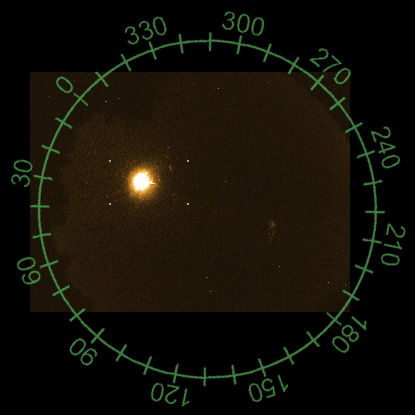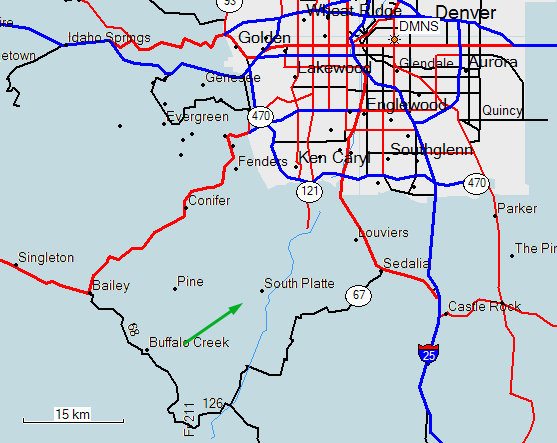I recorded a very bright fireball (mag -13) over Colorado on June 23 at UT 08:49. The radiant of this event was within my measurement error of the radiant of the June Lyrid shower, which is suggested by the IMO as a "possible source", and seems to have been more active in the 1960s. I obtained an initial velocity of 47 km/s, which is high compared with the IMO estimate of 31 km/s (I don't know how that speed was obtained).
In any case, this is an interesting fireball that fragmented explosively at a height of 53 km. I have posted a report at [
Link, see below]; be sure to check the nice videos from two of my allsky cameras. Tom Ashcraft also caught this on his allsky camera in New Mexico, over 400 km to the south.
Be sure to view the videos- the terminal explosion is very impressive.
Chris L Peterson
Cloudbait Observatory
http://www.cloudbait.com
June 23, 2010 Fireball
© Chris L Peterson June 23, 2010 Fireball
This extremely bright fireball occurred at 02:49 AM MDT over central Colorado. This meteor may be a member of the June Lyrid shower.
Data has been recovered from the following cameras:
A video was also recorded by a camera near Santa Fe, NM, 436 km south of the fireball. The image at left is from the Cloudbait camera. The peak brightness as seen from Cloudbait Observatory was apparent magnitude -13, slightly brighter than a full Moon.
The meteor descended steeply (just 10° from vertical) over the Buffalo Creek area of the mountains between Bailey, CO and Deckers, CO. It first appeared at a height of 104 km, and stopped burning at a height of 41 km. It experienced a violent fragmentation event at a height of 53 km. The meteor had an average speed of 47 km/s (106,000 mph). NEXRAD Doppler radar (KFTG Denver) over the hour following the fireball does not show evidence of a dust cloud.
The meteor radiant was at RA = 289°, dec = +35, in Lyra. This is very close to the
June Lyrid (JLY) meteor shower, which has a drift corrected radiant of RA = 284°, dec = +35. That shower is not well characterized, but suggests an initial velocity of 31 km/s, which deviates significantly from the 47 km/s estimate for this event. This may argue against this fireball being a June Lyrid, or it may simply demonstrate that the IMO estimated velocity is incorrect.
The relatively high speed, steep entry angle, high altitude of fragmentation, and probable cometary origin all make it unlikely that any material survived to the ground. In the unlikely event that meteorites were produced, the fall area is extremely rugged and not practically searchable.

© Chris L Peterson This map shows details of the fireball path. The actual flight path was 64 km long, resulting in a 11 km ground path.


Reader Comments
to our Newsletter